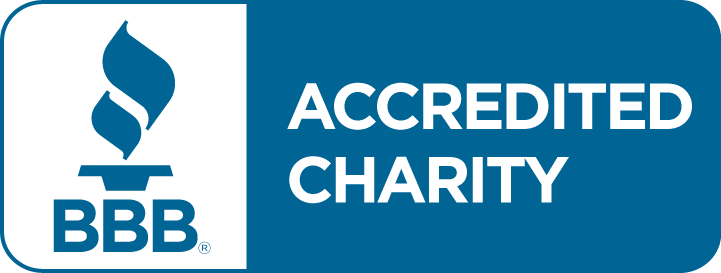Be Extra Prepared for a Natural Disaster
Be Extra Prepared for a Natural Disaster
September is National Preparedness Month, and it’s a good time to make sure that you’re prepared if a natural disaster hits.
No part of the country is immune from natural disasters: hurricanes, wildfires, tornados, floods, blizzards, earthquakes, and other types of natural disasters impact millions of people each year.
Emergency preparedness needs to be a priority discussion for you and your care team regardless of where you live.
To help guide you in starting the conversation, we asked our ambassadors for tips on what to get ready, and what to line up with your care team.
Stock up on supplies
There are emergency basics that are wise for anyone to keep on-hand in the event of a disaster:
- Non-perishable food and water for every person in your household. (Ideally a 3-day supply, and one gallon of water per person, per day). Include a can opener. Make sure to pack food that everyone can eat.
- Battery-powered radios, TVs, and extra batteries.
- First aid kit.
- Hygiene products (wet wipes, diapers, toilet paper, feminine products, soap, hand sanitizer).
- Matches.
- Waterproof containers
- Flashlight
- Extra phone batteries
- Extra set of clothing for every person in the household
- Photocopies of important ID information and credit cards in a waterproof/fireproof place
See more ideas of what to include in a Go Kit.
Special considerations for colorectal cancer patients
If a disaster is headed your way, make sure to include the following in an emergency kit:
- Medications (over the counter, prescription, oral therapies, side effect management). If a disaster is coming, ask your team to ensure you have enough supply in the event the pharmacy is closed.
- Glasses or contacts
- Extra ostomy supplies (including medical scissors and bags). (If you live in an area with a predictable disaster weather season, like hurricanes, pre-order supplies and stock up in case mail delivery is delayed.)
- Lotion
- Masks
Care Team Contact Information
Make sure you have emails, phone numbers, and your patient portal login information with you so that you can reach out to your doctors in the event of an emergency. Most care centers facing a natural disaster will be proactive with patients about satellite location that can offer support, and open locations. They will often call, email, or text.
An Outlined Plan
In addition to having physical supplies handy, you also need to outline a plan for what you’re going to do, and where you plan to go, in the event of a natural disaster. Think it through in terms of local, regional, and state-wide disasters.
Minor: If something in your home happens, where can you go for local support?
Regional: If a disaster hits your region (like your city or county), where can you go for help? Will you travel, and if so, where? How will you get there? What will you need stocked up there upon your arrival?
State-wide: If you need to travel far from home, and leave the state, what is your plan? Who will you notify and where will you go?
It’s never fun to consider these details, but it’s especially essential for patients on active treatment and caregivers. Before disaster hits, have the information you need and the plans in place to limit disruptions to your care and maximize your safety.
September is National Preparedness Month, and it’s a good time to make sure that you’re prepared if a natural disaster hits.
No part of the country is immune from natural disasters: hurricanes, wildfires, tornados, floods, blizzards, earthquakes, and other types of natural disasters impact millions of people each year.
Emergency preparedness needs to be a priority discussion for you and your care team regardless of where you live.
To help guide you in starting the conversation, we asked our ambassadors for tips on what to get ready, and what to line up with your care team.
Stock up on supplies
There are emergency basics that are wise for anyone to keep on-hand in the event of a disaster:
- Non-perishable food and water for every person in your household. (Ideally a 3-day supply, and one gallon of water per person, per day). Include a can opener. Make sure to pack food that everyone can eat.
- Battery-powered radios, TVs, and extra batteries.
- First aid kit.
- Hygiene products (wet wipes, diapers, toilet paper, feminine products, soap, hand sanitizer).
- Matches.
- Waterproof containers
- Flashlight
- Extra phone batteries
- Extra set of clothing for every person in the household
- Photocopies of important ID information and credit cards in a waterproof/fireproof place
See more ideas of what to include in a Go Kit.
Special considerations for colorectal cancer patients
If a disaster is headed your way, make sure to include the following in an emergency kit:
- Medications (over the counter, prescription, oral therapies, side effect management). If a disaster is coming, ask your team to ensure you have enough supply in the event the pharmacy is closed.
- Glasses or contacts
- Extra ostomy supplies (including medical scissors and bags). (If you live in an area with a predictable disaster weather season, like hurricanes, pre-order supplies and stock up in case mail delivery is delayed.)
- Lotion
- Masks
Care Team Contact Information
Make sure you have emails, phone numbers, and your patient portal login information with you so that you can reach out to your doctors in the event of an emergency. Most care centers facing a natural disaster will be proactive with patients about satellite location that can offer support, and open locations. They will often call, email, or text.
An Outlined Plan
In addition to having physical supplies handy, you also need to outline a plan for what you’re going to do, and where you plan to go, in the event of a natural disaster. Think it through in terms of local, regional, and state-wide disasters.
Minor: If something in your home happens, where can you go for local support?
Regional: If a disaster hits your region (like your city or county), where can you go for help? Will you travel, and if so, where? How will you get there? What will you need stocked up there upon your arrival?
State-wide: If you need to travel far from home, and leave the state, what is your plan? Who will you notify and where will you go?
It’s never fun to consider these details, but it’s especially essential for patients on active treatment and caregivers. Before disaster hits, have the information you need and the plans in place to limit disruptions to your care and maximize your safety.




